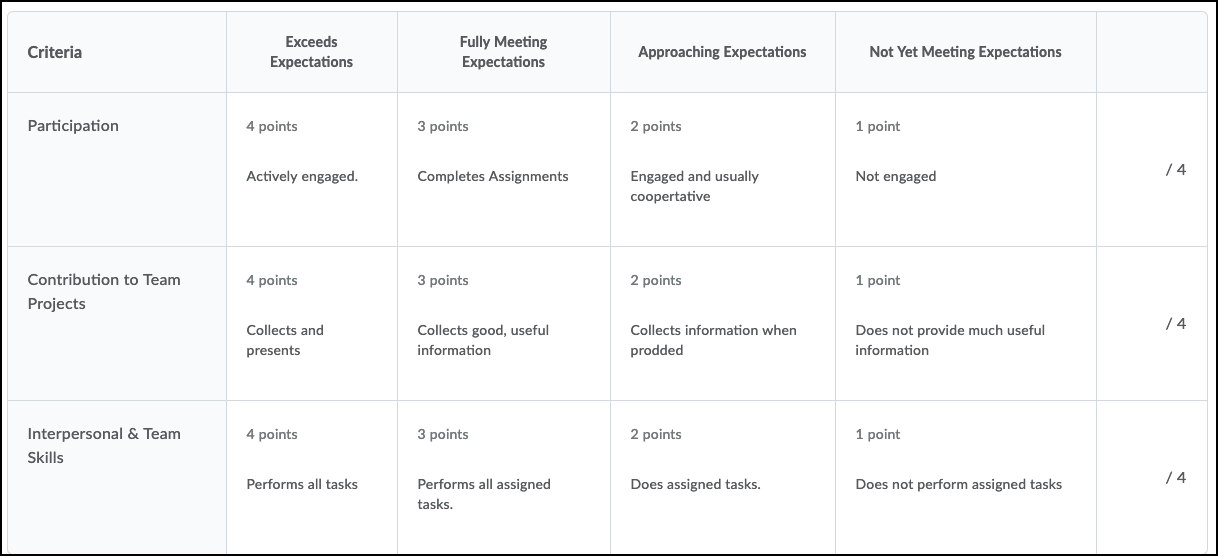Rubrics are an assessment tool used to assess or evaluate an activity based on a pre-defined set of criteria and levels, standards or descriptions. In SLATE, they can be associated with grade items, assignments, quizzes, ePortfolio items and discussion topics, or they can stand alone in the Rubrics tool.
They help students understand the expectations before an assignment or activity. They can be used formatively or summatively. Students can see where they are at in achieving the standard and set goals to work towards meeting the standard by the provided feedback.
Note: Keep in mind when you associate a rubric with an assignment folder, for example, you will need to grade it through the assignment folder. If you decide you want to grade the assignment through the grade book, you will need to unassociate it with the assignment folder and then attach it to the grade book or vice versa. SLATE will not allow you to have the same rubric attached to a grade item and an assignment at the same time. This rule applies to any item you can associate a rubric to in SLATE.
There are two types of rubrics in SLATE: Holistic and Analytic.
Analytic:
Analytic Rubrics are multi-dimensional with levels of achievement as columns and assessment criteria as rows. They allow you to assess participants’ achievements based on multiple criteria using a single rubric. You can assign different values to different criteria. Analytic rubrics may use points, custom points or text only as scoring methods.
Holistic:
Holistic Rubrics are single criteria (one-dimensional) used to assess participants’ overall achievement on an activity or item based on predefined achievement levels. Holistic Rubrics may use percentages or text only as scoring methods.
